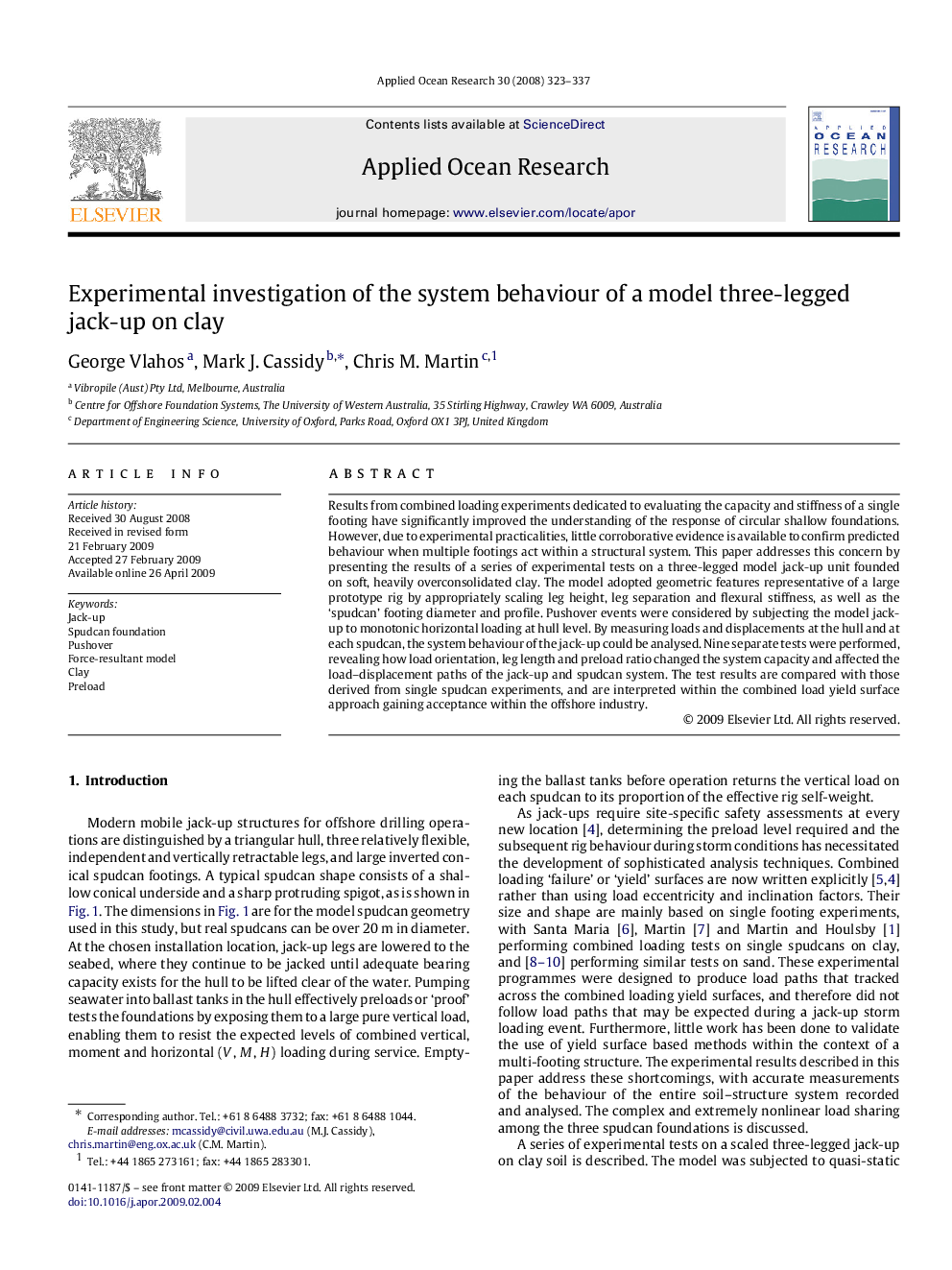| Article ID | Journal | Published Year | Pages | File Type |
|---|---|---|---|---|
| 1720387 | Applied Ocean Research | 2008 | 15 Pages |
Results from combined loading experiments dedicated to evaluating the capacity and stiffness of a single footing have significantly improved the understanding of the response of circular shallow foundations. However, due to experimental practicalities, little corroborative evidence is available to confirm predicted behaviour when multiple footings act within a structural system. This paper addresses this concern by presenting the results of a series of experimental tests on a three-legged model jack-up unit founded on soft, heavily overconsolidated clay. The model adopted geometric features representative of a large prototype rig by appropriately scaling leg height, leg separation and flexural stiffness, as well as the ‘spudcan’ footing diameter and profile. Pushover events were considered by subjecting the model jack-up to monotonic horizontal loading at hull level. By measuring loads and displacements at the hull and at each spudcan, the system behaviour of the jack-up could be analysed. Nine separate tests were performed, revealing how load orientation, leg length and preload ratio changed the system capacity and affected the load–displacement paths of the jack-up and spudcan system. The test results are compared with those derived from single spudcan experiments, and are interpreted within the combined load yield surface approach gaining acceptance within the offshore industry.
